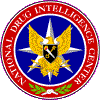
|
National
Drug Intelligence Center Philadelphia/Camden High Intensity Drug Trafficking Area Drug Market Analysis June 2007 DistributionVarious DTOs, criminal groups, gangs, and independent dealers of differing nationalities and ethnicities/races sell illicit drugs at the wholesale level, midlevel, and retail level in the PC HIDTA region. (See Table 1.)
Colombian and Dominican DTOs based in New York City are the principal wholesale distributors of cocaine and SA heroin in the PC HIDTA region. They supply midlevel and retail quantities of these drugs to African American, Caucasian, Dominican, Jamaican, and Puerto Rican DTOs as well as to independent dealers, street gangs, imprisoned gang members, and OMGs. Law enforcement officials report that many wholesale heroin distributors in the region, particularly Dominican DTOs, also supply smaller cities in eastern Pennsylvania, such as Allentown, Bethlehem, Easton, and Reading, and suburban and rural areas, such as Hazelton, Sunbury, and the Pocono Mountains. These traffickers are expanding their distribution activities into these areas largely because of the higher profits that can be generated in smaller cities, where competition is lower. Mexican DTOs are increasingly distributing wholesale quantities of cocaine in the HIDTA region. They also distribute most of the commercial-grade marijuana available in the region as well as significant quantities of powder and ice methamphetamine. Mexican DTOs use their well-established national-level transportation networks to supply these drugs to African American, Dominican, Jamaican, and Puerto Rican midlevel and retail distributors. Additionally, some Mexican DTOs are using Atlanta as a distribution center for cocaine and methamphetamine destined for the region. Vietnamese criminal groups with ties to Asian DTOs operating in Canada are emerging as major distributors of MDMA and Canadian high-potency marijuana in the HIDTA region. According to law enforcement reporting, these criminal groups have developed a significant market for high-potency marijuana in the HIDTA region, particularly in more affluent areas, where abusers are willing to pay higher prices for higher-quality marijuana. Additionally, Vietnamese criminal groups in the region have begun to sell retail quantities of high-purity ice methamphetamine. Neighborhood-based African American and Hispanic street gangs control retail drug distribution in the PC HIDTA region; they commonly distribute crack cocaine, heroin, and other illicit drugs in open-air drug markets. Various OMGs also serve as retail-level drug distributors. According to law enforcement officials, OMGs commonly use bars in the region as distribution sites for methamphetamine, crack cocaine, and marijuana. Retail drug distribution typically occurs in open-air markets. Many of these markets are "owned" or controlled by a particular gang or criminal group that either sells drugs at that location or collects a percentage of the profits from drug sales conducted by another group. Gangs and criminal groups generally establish ownership of open-air markets through long-term drug sales in a particular area by taking control through violence or threats of violence or by purchasing the right to sell drugs in a particular open-air market, often at a high price. Despite the prevalence of open-air markets in the region, pharmaceutical drugs are often diverted by abusers through a variety of other methods. Abusers in the PC HIDTA region, particularly teenagers and young adults, are increasingly using the Internet to obtain pharmaceutical drugs. These individuals reportedly place orders with online pharmacies or distributors located in other parts of the country through the Internet. They often discuss transactions and place orders on web logs ("blogs") and bulletin boards, in chat rooms, or through e-mail and electronic messaging. This situation poses a particular challenge to law enforcement officials because individuals can exchange information and consummate Internet sales quickly and with relative anonymity. Abusers also divert pharmaceutical drugs through theft (from pharmacies and family members), prescription forgeries, doctor-shopping, and pharmacy diversion. Some unscrupulous doctors and pharmacists in the region sell prescriptions for a profit without determining legitimate medical need or order controlled substances for their own use. In addition, office staff members who are authorized to call in legitimate prescriptions sometimes use the authorizations to obtain fraudulent prescriptions, which they then sell to abusers. Pharmacy employees in the region sometimes divert pharmaceuticals by stealing small amounts of a drug while filling legitimate prescriptions. Unscrupulous pharmacists also add fraudulent refill information to legitimate prescriptions or prepare fraudulent "call-in" prescriptions. Retail distributors in the region are becoming more technologically sophisticated in their operations. Distributors increasingly are using cell phones and PDAs (personal digital assistants) to coordinate drug transactions, making detection by law enforcement more problematic. The more sophisticated distributors often use prepaid cellular telephones, discontinue using cellular telephones after short periods, or use prepaid calling cards to thwart law enforcement's efforts to monitor drug-related communications. |
||||||||||||||||||||||||||||||||||||||||||||||